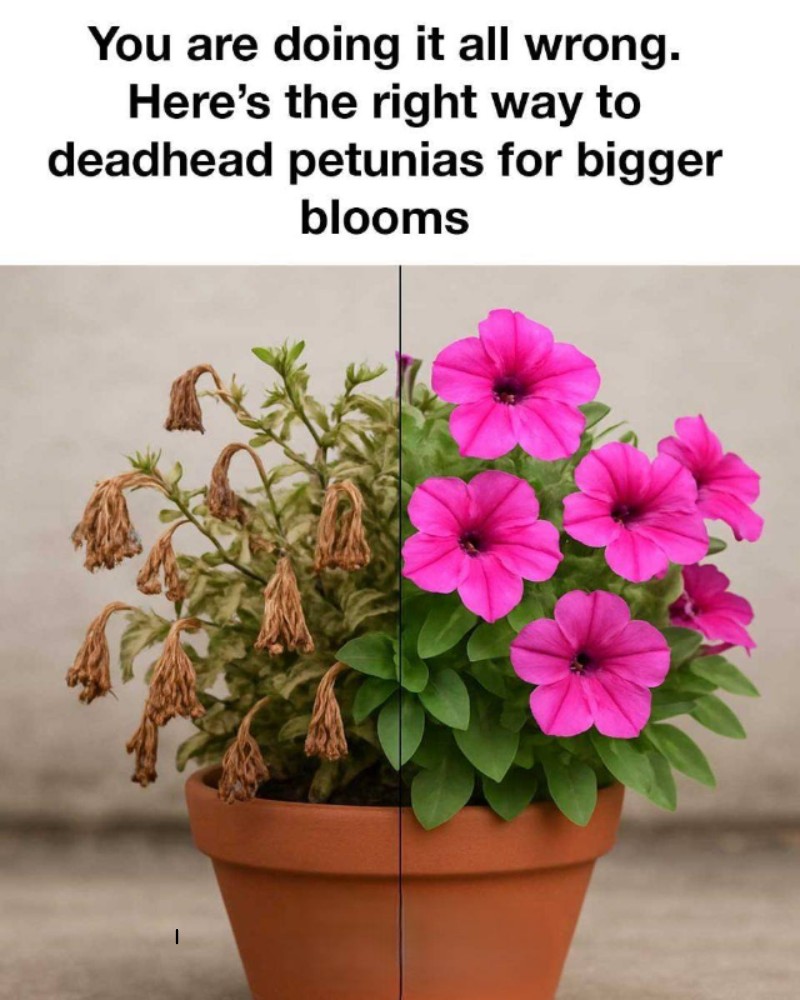ADVERTISEMENT
You Are Doing It All Wrong: Here’s the Right Way to Deadhead Petunias for Bigger Blooms
ADVERTISEMENT
Petunias are some of the most popular garden flowers — and for good reason. Their vibrant colors, long blooming season, and low maintenance needs make them perfect for containers, hanging baskets, and flower beds. But if your petunias have stopped blooming or look leggy and tired, there’s a good chance you’re deadheading them incorrectly — or not at all.
Here’s the truth: most gardeners deadhead petunias the wrong way, and that can actually stunt new growth. Don’t worry — once you learn the right way to deadhead, you’ll be rewarded with fuller, longer-lasting blooms all season long.
🌸 What Is Deadheading — and Why It Matters
Deadheading is the process of removing spent (dead or fading) flowers from a plant. For petunias, this step is crucial. When a bloom dies, the plant starts to shift energy toward seed production instead of making new flowers. By removing those dying blooms, you’re telling the plant to keep flowering instead of setting seed.
But here’s where most people go wrong…
🚫 What Most Gardeners Do Wrong
Most people simply pinch off the dead flower petals, leaving the green base (called the ovary) behind. While it may look neater, this does nothing to stop seed production — and your plant still thinks it’s done blooming.
The correct way to deadhead petunias involves removing the entire flower head, including the ovary beneath the petals. That’s the only way to prevent the plant from going to seed and encourage it to produce more blooms.
✅ The Right Way to Deadhead Petunias for Bigger Blooms
What you’ll need:
- Clean fingers or garden scissors/snips
- A few minutes of your time each week
Step-by-step guide:
- Find the spent flower
Look for blooms that are wilted, brown, or have dropped their petals. These are ready to be deadheaded. - Locate the green seed pod (ovary)
Just beneath the flower, you’ll see a swollen green pod. That’s what you need to remove — not just the petals. - Snip or pinch just below the pod
Using your fingers or sharp snips, remove the flower just above the next set of leaves or branching stem. This encourages bushier growth and redirects energy to producing new buds. -
ADVERTISEMENT
ADVERTISEMENT
